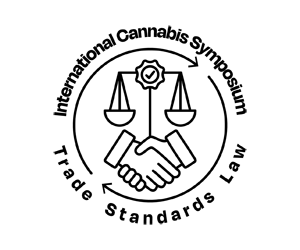mcglinchey
On June 28, 2024, in a maximalist decision that went further than even the most ardent opponents of Chevron deference thought possible, the Supreme Court finally and emphatically overruled Chevron deference, the watershed rule that governed the level of deference afforded to administrative agency interpretation of ambiguous statutes for nearly forty years.
The Court’s decision will have an immediate and lasting impact on executive agency interpretations of ambiguous federal statutes, as well as, potentially, on hundreds, if not thousands of prior decisions decided on Chevron deference grounds and the future of the administrative state in America.
An Emphatic Rejection of Judicial Deference to Agency Interpretation
Chevron deference, established in 1984, required courts to defer to “permissible” agency interpretations of the statutes those agencies administer, even when a reviewing court reads the statute differently. This principle of deference to administrative agencies has been a cornerstone of administrative law for nearly four decades and one that Chevron opponents had looked to overturn for years.
Enter Loper Bright Enterprises, Inc. v. Raimondo and Relentless, Inc. v. Dep’t of Commerce, a pair of cases that sought to overturn Chevron deference once and for all. As the Court’s questions at oral argument made clear, Chevron deference was on borrowed time. Even so, the majority opinion in Loper Bright and Relentless, Inc. represents an emphatic rejection of agency deference ushered in by Chevron and its progeny.
Chief Justice Roberts’ majority opinion focused on not only the history of statutory interpretation in this Country, but also the creation of the Administrative Procedures Act (APA), as well as what the majority viewed as the unworkability of Chevron deference in its current form. The Chief Justice first noted that Article III was always interpreted to vest in the courts the power to interpret what a law means. Despite this, Chief Justice Roberts noted that courts have always understood that some deference was afforded to the Executive Branch’s interpretation of statutes. But, according to the Chief Justice, that deference was not unlimited. Rather, “[t]he views of the Executive Branch could inform the judgment of the Judiciary, but did not supersede it.” The majority opinion explained that this version of agency deference continued throughout the New Deal era, further noting that when deference was given to an agency, it was to fact-based inquiries, not questions of law.
The APA was enacted in 1946 “as a check upon administrators whose zeal might otherwise have carried them to excesses not contemplated in legislation creating their offices.” As Chief Justice Roberts noted, under the APA, courts utilize their own judgment in deciding questions of law, notwithstanding an agency’s interpretation of the particular law. In the majority’s view, the APA: “makes clear that agency interpretations of statutes—like agency interpretations of the Constitution—are not entitled to deference. The APA’s history and the contemporaneous views of various respected commentators underscore the plain meaning of its text.” This reasoning, according to the majority, supports a de novo (i.e., no deference given) review standard of an ambiguity’s meaning in a particular statute.
Despite this, the Court did note that some degree of agency deference may still be appropriate in certain circumstances. As the Chief Justice explained:
Courts exercising independent judgment in determining the meaning of statutory provisions, consistent with the APA, may—as they have from the start—seek aid from the interpretations of those responsible for implementing particular statutes. And when the best reading of a statute is that it delegates discretionary authority to an agency, the role of the reviewing court under the APA is, as always, to independently interpret the statute and effectuate the will of Congress subject to constitutional limits. The court fulfills that role by recognizing constitutional delegations, fixing the boundaries of the delegated authority, and ensuring the agency has engaged in “ ‘reasoned decision making’ ” within those boundaries.
According to the majority, Chevron cannot be reconciled with the text and framework of the APA because it requires a court to “ignore, not follow” the reading of the text the court would have reached if it exercised its own independent judgment as the APA (and Article III) require. The Court further rejected the claim that statutory ambiguities are implicitly delegated to agencies as Chevron presupposes.
Not only did the majority find that Chevron contradicts the mandates of the APA, but it also rejected the Government’s (and dissents’) arguments in support of the continued viability of Chevron deference. For instance, the majority disagreed that agency experts are better suited to decide and interpret tough and complicated statutory questions. According to Chief Justice Roberts, “agencies have no special competence in resolving statutory ambiguities. Courts do,” and “even when an ambiguity happens to implicate a technical matter, it does not follow that Congress has taken the power to authoritatively interpret the statute from the courts and given it to the agency.” The Court further rejected the claim that such interpretations should be made by policymakers as opposed to unelected judges, noting that “[r]esolution of statutory ambiguities involves legal interpretation, and that task does not suddenly become policymaking just because a court has an ‘agency to fall back on.’”
What About Consistency?
What about the so-called consistency that adherents claim comes with applying Chevron deference? According to the majority, it provides no such consistency at all. Rather, because Chevron deference is so indeterminate and sweeping, the Court has had to consistently amend and revise the test, “transforming the original two-step into a dizzying breakdance.” The Court was also not persuaded that its decision would have any impact on the more than 18,000 lower court cases decided on Chevron deference grounds. According to the majority, a party seeking to challenge one of those rulings must establish a “special justification” to do so, and the end of Chevron deference does not constitute such a justification.
Finally, the majority rejected the argument that stare decisis warranted saving Chevron from the chopping block, noting that Chevron is “unworkable;” that there has not been, according to the majority, a meaningful reliance on Chevron in recent years by the Court; and that it has been chipped away at over the years, which calls into question its continued validity and reliance by lower courts.
A Fiery Dissent
Justice Kagan pulled no punches in her dissent and took the majority to task for, in her opinion, giving “itself exclusive power over every open issue—no matter how expertise-driven or policy-laden—involving the meaning of regulatory law.” As Justice Kagan explained:
Its justification comes down, in the end, to this: Courts must have more say over regulation—over the provision of health care, the protection of the environment, the safety of consumer products, the efficacy of transportation systems, and so on. A longstanding precedent at the crux of administrative governance thus falls victim to a bald assertion of judicial authority. The majority disdains restraint, and grasps for power.
Justice Kagan also emphatically disagreed with both the majority’s rationale as well as its disregard, in her opinion, for what comes next with the end of Chevron deference. For instance, she disagreed with the majority that section 706 of the APA mandated a court to utilize a de novo standard when deciding an agency’s interpretation of an ambiguous statute. The dissent also vehemently disagreed with the majority’s contention that courts are in a better position to resolve statutory ambiguities than the so-called agency experts.
As well, the dissent took the majority to task for not adhering to stare decisis, claiming that Chevron was entitled to a particularly strong form of reliance because (1) Congress has had opportunities to overrule it in the past but has declined to do so; and (2) the Court, and lower courts, have continued to rely on Chevron deference in thousands of decisions. And what about the justification that the Court had not relied on Chevron lately? According to Justice Kagan, that was all by design:
This Court has “avoided deferring under Chevron since 2016” (ante, at 32) because it has been preparing to overrule Chevron since around that time. That kind of self-help on the way to reversing precedent has become almost routine at this Court. Stop applying a decision where one should; “throw some gratuitous criticisms into a couple of opinions”; issue a few separate writings “question[ing the decision’s] premises” (ante, at 30); give the whole process a few years . . . and voila!—you have a justification for overruling the decision.
Justice Kagan likewise found little comfort in the majority’s attempt to insulate prior Chevron-based decisions from being collaterally attacked, noting that finding a “special justification” to warrant overturning such precedent is a low burden to meet.
What Comes Next?
The decision is expected to impact a wide range of regulatory environments, from environmental protections and healthcare to maritime, securities, tax, financial regulations, and a litany of other federally regulated areas. Federal agencies will now face closer scrutiny and potentially more frequent legal challenges when interpreting ambiguous statutes. Moreover, federal district and circuit courts do not always agree and this will result in inconsistent application of regulations throughout the country. This, in turn, will result in more issues needing to be resolved by the Supreme Court.
Perhaps unsurprisingly, the Court did not replace Chevron deference with another test for courts to apply when confronted with an ambiguous statute and an agency’s interpretation of the same. Rather, it appears that when faced with ambiguity in a statute, pursuant to the APA, courts will utilize the normal tools of statutory interpretation to decide what the ambiguity means, and that no deference will ordinarily be given to an administrative agency’s interpretation of the ambiguity.
Notably, the majority did find that in some circumstances (like when Congress expressly authorizes it) deference may be appropriate to an administrative agency. Regardless, it is likely that the end of Chevron deference will turbo-charge forum shopping. Plaintiffs hostile to an agency’s particular statutory interpretation or final rule will most likely seek out sympathetic courts, whereas those seeking to upload an agency’s decision will look for courts traditionally more deferential to the Executive Branch.
And what about those 18,000 plus cases previously decided on Chevron deference grounds? While there certainly may be defenses the Government can raise (e.g. laches, statute of limitations) to a belated challenge, the dissent’s worry that a requirement of a “special justification” to overturn such precedent amounts to no justification at all is well-founded. Indeed, a court hostile to a particular agency or its interpretation can easily come up with a rationale it labels as a “special justification” to overturn an old Chevron-based decision, should it choose to do so. And as Solicitor General Prelogar stated at oral argument, litigants almost assuredly “will come out of the woodwork” to challenge Chevron-based decisions.
As well, Loper Bright and Relentless, Inc., at least on paper, represent a seismic shift in power in Washington. Under Chevron, the Executive Branch’s interpretation of statutory ambiguities was given heightened deference. Now that interpretation belongs almost exclusively to the judicial branch to, in the words of Justice Kagan, decide hyper-technical questions like “[w]hen does an alpha amino acid polymer qualify as such a ‘protein’” under the Public Health Services Act, or “[h]ow much noise is consistent with ‘the natural quiet’” that the Department of the Interior must regulate from aircraft flying over the Grand Canyon?
Finally, while this decision represents an emphatic rejection of agency deference, the majority did concede that agency deference is appropriate in certain circumstances. Indeed, Chief Justice Roberts made clear that Skidmore deference (in which courts grant a modicum of deference to an agency’s statutory interpretation “to the extent that it has the ‘power to persuade’”) remains alive and well. Moreover, the Court’s opinion makes clear that Congress is free to delegate authority to the Executive Branch to interpret the meaning of certain statutes. It remains to be seen how often courts will utilize Skidmore deference moving forward when confronted with agency interpretation of ambiguous statutes.
Regardless, Loper Bright and Relentless, Inc. mark a tectonic shift in administrative law and could reshape the landscape of American governance for years to come. Federal agencies will need to adapt to new judicial scrutiny, legislators may face increased pressure to craft more precise laws, and courts will brace for a heavier caseload as they take on a more prominent role in statutory interpretation.
For a discussion of the APA and related agency rule making requirements, see:
- Podcast: Demystifying Agency Rulemaking, Ep.1: Navigating the Administrative Procedures Act to Safeguard Against Overreaching Regulations and
- Podcast: Demystifying Agency Rulemaking, Ep. 2: Mastering Participation in the Process.


















